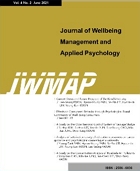 E-ISSN : 2586-6036
E-ISSN : 2586-6036
ZHANG, Fan
YU, Li
Abstract
Purpose: This research, based on the tariff reduction table negotiated by South Korea and China free trade area, the specific tariffs of the two countries in the implementation of the Korea-China Free Trade Agreement are calculated, and the global equilibrium model, the global trade analysis project (GTAP) model, is used to simulate and analyze the impact of the Korea-China free trade area on the output and trade of the two countries. Research design, data and methodology: The study conducted a survey on 2018 year GTAP 9.0data. After empirically analyzing the data, we believe that the Major industry in Korea and China will maintain its growth momentum. Results: This study shows that under the assumption that the average tariff of China and South Korea at the beginning of FTA was reduced to 20%, two scenarios were simulated. Two scenarios are simulated under the assumption that the average tariff of China and South Korea FTA will be reduced to 10%. Conclusions: This paper assumes that the average tariff of China-Korea FTA is set at 20%, 10% and zero tariff respectively in the early, middle and long term of the FTA construction. It considers the impact of China-Japan-Korea FTA on China- Korea FTA.
- keywords
- China, Korea, Major industry, FTA, GTAP model
- Downloaded
- Viewed
- 0KCI Citations
- 0WOS Citations













